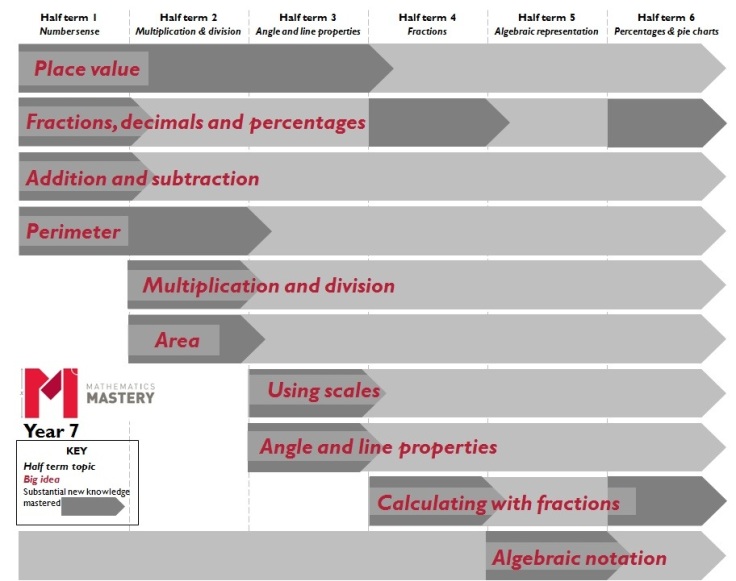Recently, Bruno Reddy and Michael Tidd have written about their experiences in designing a mastery maths curriculum. It seems that there are lots of us designing overviews for year groups with the same goals in mind: long term retention of knowledge and concepts with problem solving at the heart.
It is fascinating to see what others have come up with working on the same project, and also a little reassuring. Bruno provides six tips for creating a mastery curriculum, some of which I’d agree with wholeheartedly and some I’d adapt slightly for a primary curriculum. He advocates lots of practice, separating minimally different concepts, teaching concepts in a sensible order, and spending more time teaching fewer things. All of which sound like good advice to me.
Whereas Bruno suggests going back to basics in the first part of Year 7, I’d say that for a primary curriculum, the spotlight on place value, number facts, mental arithmetic and written algorithms needs to be relentless; spaced out and returned to many times over each year. In lower key stage 2, I’d have these units of work at least termly and more likely half termly. Each time the topic is revised, the expectations can be upped, with more and more time devoted to solving problems. This would enable the teacher to spend the time on good modelling and practice, while gradually increasing the expectation in that topic over the year and introducing different styles of problem. I’d say that this is preferable to organising revision through starters, homework etc alone.
Like Michael, I started with the mathematics mastery example overview.
Those arrows denoting the continued study of a concept over the year do not provide enough guidance for a teacher as to when and what to specifically revise. For the draft that I’m working on, I wanted to change that. While Michael describes spending a whole half term on fractions, I’d suggest splitting fractions into different units and linking back each time, like in the draft year 4 example below:
I thought that Children would move from comparing pictorial representations of fractions, to looking at comparing fractions and decimals, to finding fractions of quantities throughout year 4. Each time there’s a unit of work related to fractions, the teacher would check up on prior knowledge (with some sort of test – see benefit number 3 on test potentiated learning) and spend an appropriate time remodelling and getting children to practise previous content before linking to the main work in the topic.
A maths overview like this would be fine for maths specialists but for some, and indeed NQTs and teachers new to a year group, a little more guidance might be necessary. To supplement the overview, I’d have some more detail on the topics themselves including the core knowledge that children must have and be able to recall in order to master the topic and a brief idea of what children should be expected to do:
This pair of topics will be one unit of work within autumn term 1. These topics will be repeated over the year, so that practice will be distributed or spaced, but another layer of spacing can be introduced by switching between these two topics: a couple of days on place value, a couple of days on mental addition and subtraction. See Robert Bjork on desirable difficulties and a recent post of mine on the same ideas.
All of this, of course, is still a draft. The order of concepts could do with a review, as could the expectations for what children should be able to do in each unit. Also, the overview needs to emphasise flexibility. Although topics are arranged to be revised as shown, there will be occasions when some topics don’t need as much revision while others will need more.




Reblogged this on The Echo Chamber.
LikeLike
Reblogged this on .
LikeLike
I found this very interesting and informative.
The idea you have about breaking the units up and revisiting them several times over the year is great. I would be interested to see how you plan for and implement this.
Piya
Home
LikeLike
I am very interested in implementing the Maths Mastery approach in our Junior School. Unfortunately the Maths Mastery programme has to start in Y1 (or YR) and they won’t let us on the programme starting in Y3. Have you done any more work filling in further details of what your programmes of study would look like in other KS2 classes?
LikeLike
Not too much. We’re using maths mastery for year 1 and gradually applying the principles across the school to ensure a smooth transition as is progresses over the next few years.
LikeLike